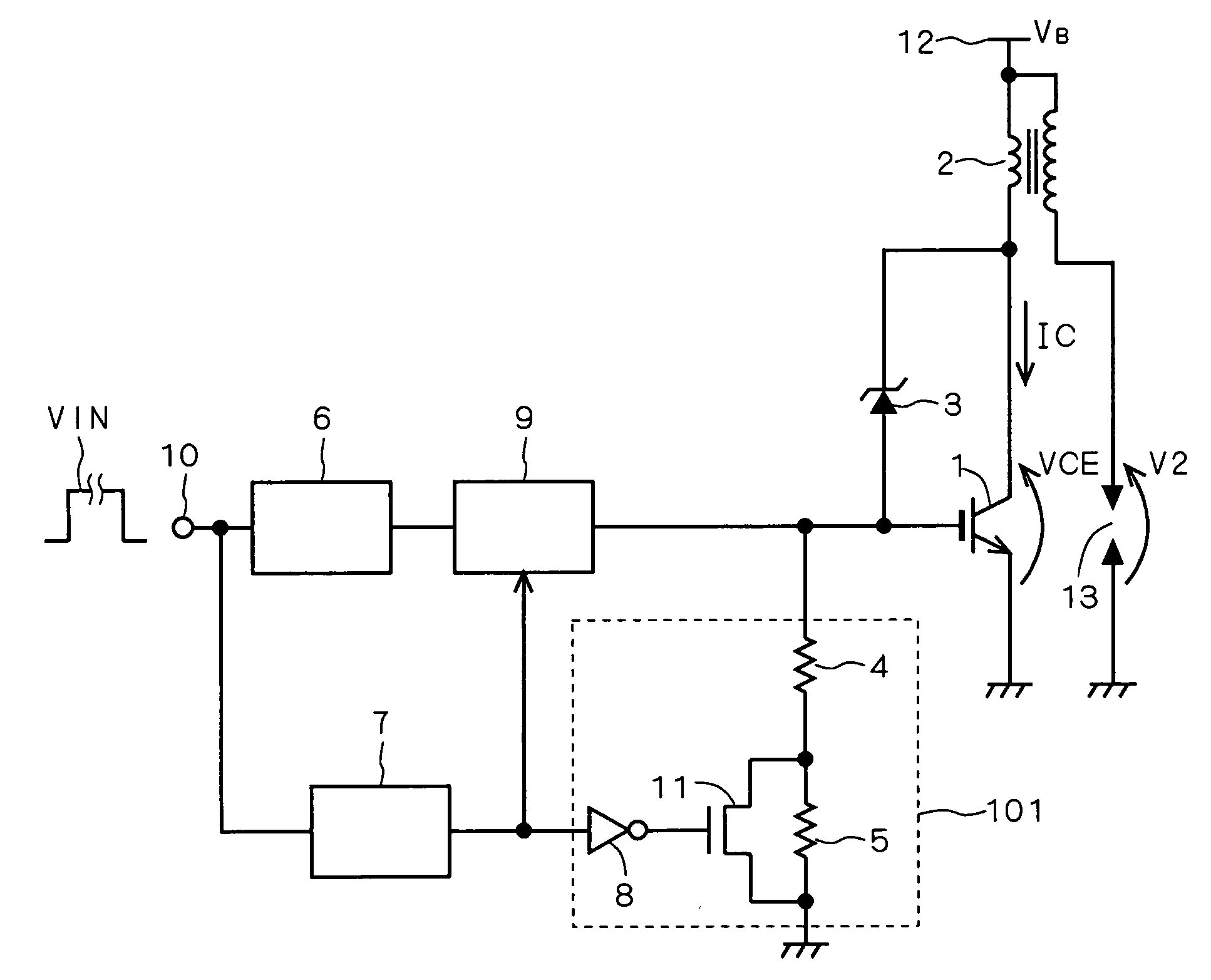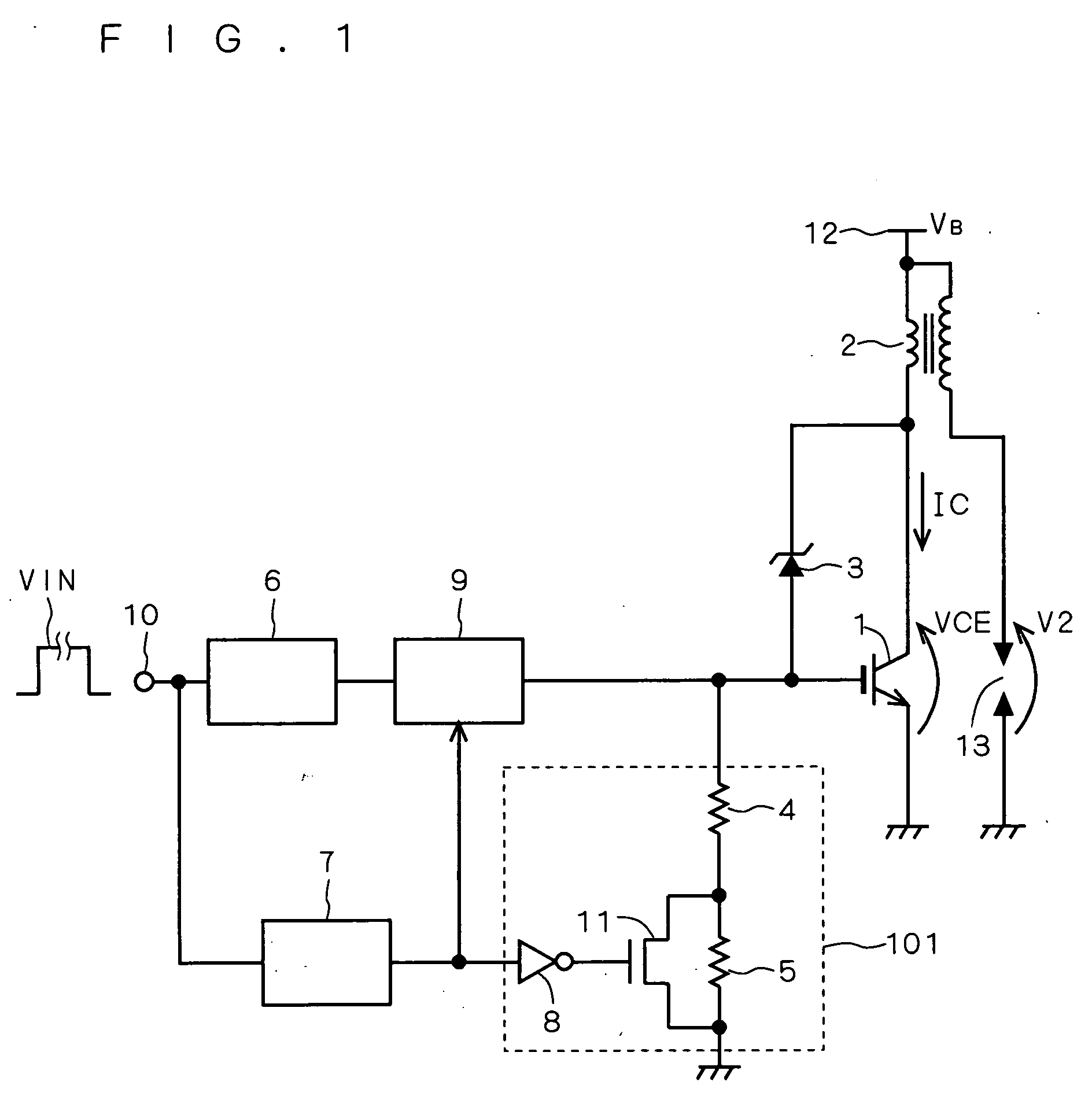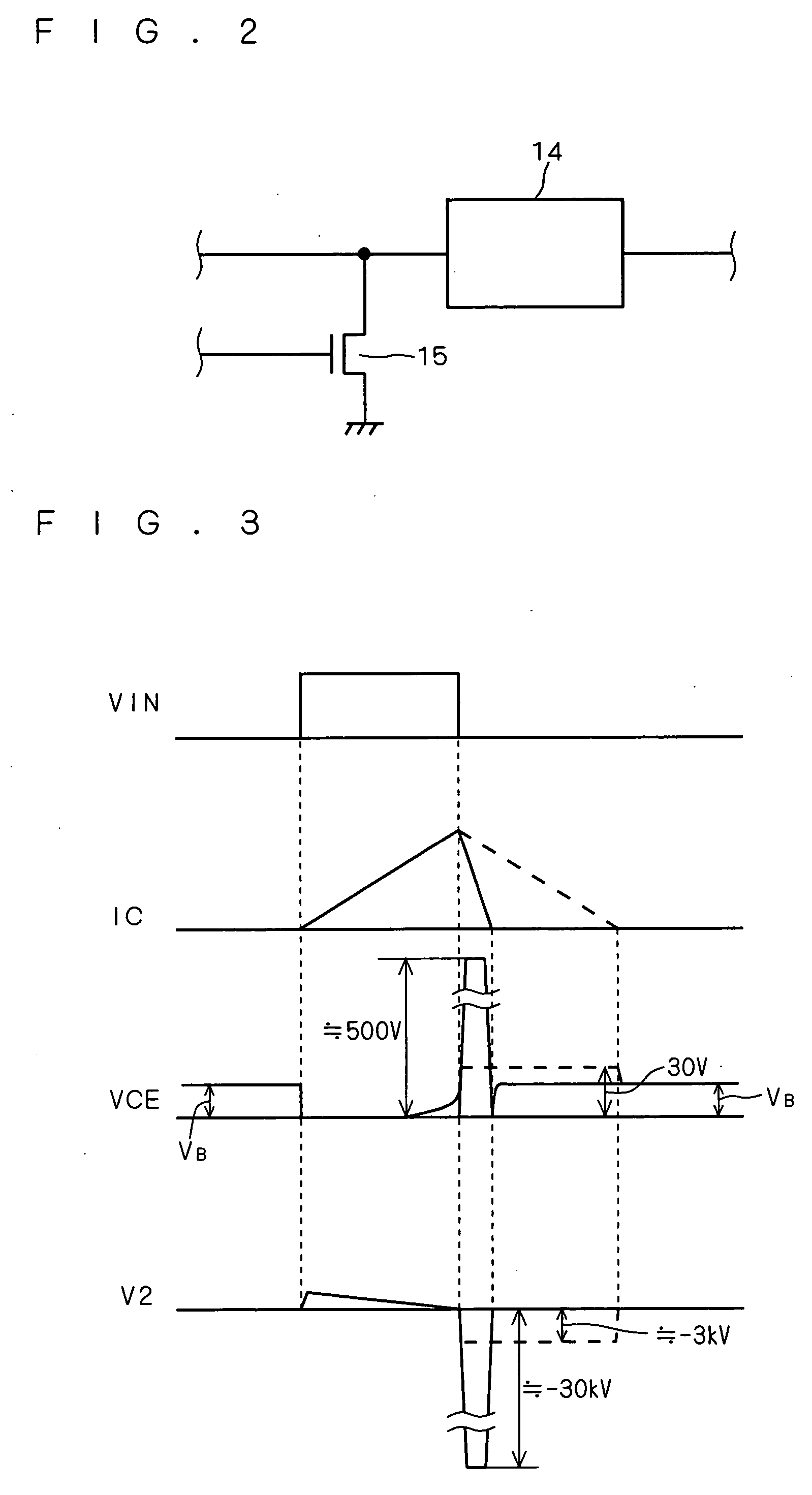Semiconductor device
a semiconductor device and semiconductor technology, applied in the direction of pulse generators, pulse techniques, machines/engines, etc., can solve the problems of complex circuit configuration and adjustment, output current is not linearly proportional, and the characteristics of the semiconductor device itself or load are degraded or broken, etc., to achieve the effect of simple circuit configuration
- Summary
- Abstract
- Description
- Claims
- Application Information
AI Technical Summary
Benefits of technology
Problems solved by technology
Method used
Image
Examples
first preferred embodiment
[0034]FIG. 1 is a circuit diagram showing a configuration of a semiconductor device according to the present embodiment. A control circuit 6 has its input connected to an input terminal 10 and its output connected to the input of a gate driving circuit 9. The gate driving circuit 9 has its output connected to the gate (control terminal) of an IGBT (Insulated Gate Bipolar Transistor) 1 serving as a switching device.
[0035] Upon receipt of an input signal VIN through the input terminal 10, the control circuit 6 controls the input signal VIN in response to a signal sent from a monitoring circuit (not shown) for monitoring the driving status of the IGBT 1, to output a control signal to the gate driving circuit 9. The gate driving circuit 9 drives the gate of the IGBT 1 in response to the control signal.
[0036] The IGBT 1 has its collector (current input terminal) connected to one end of a primary coil constituting a load coil (inductive load) 2 and the cathode of a Zener diode (clamping...
second preferred embodiment
[0072]FIG. 7 is a circuit diagram showing a configuration of a semiconductor device according to the present embodiment. A Zener diode 28 (second clamping device) has its cathode connected to the collector of the IGBT 1 and its anode connected to the source of a PMOS transistor 27 and one end of a resistor 29. The PMOS transistor 27 has its drain connected to the gate of the IGBT 1. A breakdown voltage in the Zener diode 28 is set at the same value as the Zener diode 3.
[0073] The resistor 29 has the other end connected to the gate of the PMOS transistor 27 and the drain of an NMOS transistor 26. The source of the NMOS transistor 26 is grounded. A buffer circuit 25 has its output connected to the gate of the NMOS transistor 26 and its input connected to the output of the timer circuit 7.
[0074] Since other configuration is the same as that described in the first preferred embodiment, similar components are indicated by the same reference numbers, and repeated explanation is omitted ...
third preferred embodiment
[0082]FIG. 8 is a circuit diagram showing a configuration of a semiconductor device according to the present embodiment. In the present embodiment, the resistor (discharge resistor part) 16 is connected to the gate of the IGBT 1 in place of the gate discharge resistor part 101. The Zener diode 28 is configured to have a breakdown voltage equal to a desired clamping voltage (e.g., approximately 30V) for clamping the voltage VCE.
[0083] Since other configuration is the same as that described in the second preferred embodiment, similar components are indicated by the same reference numbers, and repeated explanation is omitted here.
[0084] The operation of the semiconductor device according to the present embodiment will be described now. In the normal operation, an L-level signal output from the timer circuit 7 is input to the gate of the NMOS transistor 26 through the buffer circuit 25. The NMOS transistor 26 is brought into the OFF state, and the gate of the PMOS transistor 27 is not...
PUM
 Login to View More
Login to View More Abstract
Description
Claims
Application Information
 Login to View More
Login to View More - R&D
- Intellectual Property
- Life Sciences
- Materials
- Tech Scout
- Unparalleled Data Quality
- Higher Quality Content
- 60% Fewer Hallucinations
Browse by: Latest US Patents, China's latest patents, Technical Efficacy Thesaurus, Application Domain, Technology Topic, Popular Technical Reports.
© 2025 PatSnap. All rights reserved.Legal|Privacy policy|Modern Slavery Act Transparency Statement|Sitemap|About US| Contact US: help@patsnap.com



